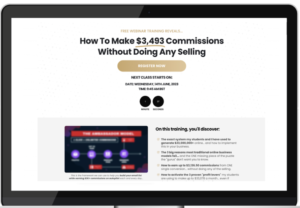Small Business Dan Kennedy Strategies

Running a small business can feel like navigating a complex labyrinth. According to the National Federation of Independent Business, nearly half of small businesses fail within the first five years.
This blog post offers pragmatic solutions by introducing you to Dan Kennedy’s proven strategies for small businesses. Ready to turn your enterprise into an industry giant? Let’s dive in!
Creative Thinking Strategies for Small Business Owners
Small business owners can unlock their creative thinking by stealing and adapting what’s already built, working backwards, being market-driven in everything they do, swiping legally and ethically, and using doodads as inspiration.
Steal and adapt what’s already built
Successful businesses frequently utilize existing strategies and models, then tweak them to suit their own unique needs. Rather than dedicating time to developing brand new methodologies, they capitalize on the proven ones already available in the market.
By identifying what works well for other companies or initiatives similar to theirs, they can adjust these approaches to better fit their business goals and objectives. This level of strategic adaptation propels a business forward without wasting valuable resources on trial-and-error experiments.
Thus, stealing ideas isn’t necessarily bad; as long as you mold it into something uniquely yours!
Work backwards
To achieve success in small business, it’s important to work backwards. This means starting with your end goal in mind and then figuring out the steps you need to take to get there.
By working backwards, you can create a clear roadmap that will guide your actions and decisions. For example, if your goal is to increase sales by 50% in the next year, you would first analyze what strategies and tactics would be necessary to achieve that growth.
Then, you can break down those strategies into smaller tasks or milestones that can be accomplished on a weekly or monthly basis. This method of working backwards helps ensure that every action you take is aligned with your ultimate objective, increasing the likelihood of achieving it.
By working backwards in your small business endeavors, you are able to set specific targets and develop actionable plans towards achieving those goals. This approach allows for better planning and prioritization since each step is based on what needs to happen next in order to move closer towards your desired outcome.
In addition, this strategy helps avoid wasting time and resources on activities that do not directly contribute to reaching your goal. Instead, all efforts are focused on tasks that align with the big picture vision for your business.
Be market/buyer driven in (almost) everything you do
To succeed in small business, it’s crucial to be market/buyer driven in (almost) everything you do. This means putting your customers at the center of your decision-making process.
Understand their needs, wants, and preferences and shape your products, services, and marketing strategies accordingly. Conduct thorough market research to identify trends and stay ahead of the competition.
By being market-driven, you can create relevant offerings that resonate with your target audience and increase your chances of success in the highly competitive business landscape.
Swipe legally and ethically
Small business owners can benefit from the strategy of “swiping” ideas, but it is important to do so legally and ethically. Swiping involves observing what successful businesses are doing and adapting those strategies to fit your own business.
By studying other businesses, you can gain insights into effective marketing techniques, pricing strategies, and customer acquisition methods. However, it is crucial to ensure that any ideas or concepts borrowed are used in an ethical manner and comply with legal guidelines.
This approach allows small business owners to learn from others’ successes while maintaining integrity in their own practices.
Use doodads as inspiration
Look around you – everyday objects can ignite your creativity and provide inspiration for your small business. From a unique design on a coffee mug to an interesting pattern on a notebook cover, these doodads can spark fresh ideas and help you think outside the box.
Take note of the colors, shapes, and textures that catch your eye, and consider how you can incorporate them into your branding or product development. By using doodads as inspiration, you can infuse your business with a touch of originality that sets it apart from the competition.
The Importance of Brand Building vs Direct Response Advertising
Brand building and direct response advertising are two essential strategies for small businesses to consider. While both have their merits, understanding the importance of each can greatly impact the success of your marketing efforts.
Brand building is about creating a strong and recognizable brand identity that resonates with your target audience. It involves establishing trust, credibility, and loyalty among customers.
By consistently delivering on your brand promise and values, you can differentiate yourself from competitors and build a long-term relationship with customers.
On the other hand, direct response advertising focuses on immediate customer action. This type of advertising aims to generate an immediate response or sale through targeted messages and offers.
It’s all about driving conversions and measuring results.
Both brand building and direct response advertising play important roles in a well-rounded marketing strategy. Brand building helps create awareness, loyalty, and emotional connections with customers over time.
Direct response advertising drives revenue growth by generating leads or sales in the short term.
Ultimately, finding the right balance between these two strategies depends on your business goals, target audience, industry landscape, budget, and resources available. A combination of both approaches could be beneficial in maximizing your reach while strengthening your overall brand presence in the market.
Digital Marketing Strategies for Small Businesses
Small businesses can maximize their marketing efforts by understanding the marketing funnel, leveraging social media marketing, building brand awareness, and implementing inbound and direct response marketing techniques.
Understanding the marketing funnel
The marketing funnel is a framework that helps businesses understand the customer journey from awareness to purchase. It consists of different stages, starting with the top of the funnel where potential customers become aware of your brand or product.
This is followed by the consideration stage, where they evaluate your offerings and compare them with competitors. The final stage is conversion, where customers make a purchase decision.
Understanding the marketing funnel allows small businesses to tailor their marketing strategies at each stage to attract and convert more customers. By targeting specific audiences and delivering relevant messages, businesses can optimize their sales process and improve their overall success in customer acquisition.
Importance of social media marketing
Social media marketing has become increasingly important for small businesses. By utilizing platforms such as Facebook, Instagram, and Twitter, businesses can reach a wider audience and engage with their customers on a personal level.
Social media allows for direct interaction, giving businesses the opportunity to build brand awareness and establish relationships with their target market. It also provides valuable insights into customer preferences and behaviors, which can inform decision-making and improve marketing strategies.
With its cost-effectiveness and ability to drive traffic to websites or physical stores, social media marketing is an essential tool for small businesses looking to thrive in today’s digital landscape.
Building brand awareness
Building brand awareness is a critical component of any small business’s marketing strategy. By increasing the visibility and recognition of your brand, you can attract more customers and establish trust in the marketplace.
There are several effective ways to build brand awareness, such as using social media platforms to engage with your target audience, creating compelling content that showcases your expertise, and collaborating with influencers or partnering with other businesses for cross-promotion opportunities.
It’s important to consistently communicate your brand values and unique selling proposition through various channels to ensure that potential customers become familiar with your business and what it stands for.
Inbound vs direct response marketing
Inbound and direct response marketing are two different strategies that small businesses can use to attract customers. In inbound marketing, the focus is on creating valuable content that draws people in and establishes your brand as an industry expert.
This could include blog posts, social media campaigns, or podcasts. On the other hand, direct response marketing aims to generate immediate action from potential customers through targeted messaging and compelling calls-to-action.
This could involve email marketing campaigns, online ads with clear offers or discounts, or direct mailers. Both strategies have their benefits – inbound marketing helps build brand awareness and loyalty over time while direct response marketing can deliver quick results and drive sales.
ROI of direct response advertising
Direct response advertising is a powerful tool for small businesses to generate a high return on investment (ROI). By utilizing direct response techniques, such as targeted messaging and call-to-action prompts, businesses are able to track and measure the effectiveness of their advertisements.
This allows them to optimize campaigns in real-time, ensuring that every dollar spent on advertising is being utilized effectively. With direct response advertising, small businesses can see immediate results and quickly adapt their strategies to maximize their ROI.
The Psychology of Direct Response Copywriting and Sales Persuasion
Direct response copywriting and sales persuasion are powerful tools for small business owners looking to drive sales and conversions. By understanding the psychology behind these techniques, you can create compelling messaging that resonates with your target audience.
When crafting direct response copy, it’s important to tap into emotions, highlight benefits, and address pain points directly. This approach helps to grab attention and elicit a strong response from potential customers.
One key aspect of effective direct response copywriting is using persuasive language that triggers action. By employing words like “now” or “limited time,” you create a sense of urgency that motivates people to take immediate action.
Additionally, using testimonials or case studies can help build trust and credibility with your audience.
In terms of sales persuasion, it’s crucial to understand the psychology of decision-making and influence factors. People are more likely to make a purchase when they perceive value in what you’re offering.
To leverage this, focus on highlighting the unique features or benefits of your product or service that set it apart from competitors.
By applying these psychological principles in your direct response copywriting and sales strategies, you’ll increase the effectiveness of your marketing efforts and ultimately drive more business growth for your small enterprise without breaking the bank on advertising expenses.
Discover the powerful strategies of Small Business Dan Kennedy and take your business to new heights. From creative thinking techniques to digital marketing strategies, these battle-tested methods will help you build your brand, attract customers, and optimize your sales funnel.
Don’t miss out on the opportunity to learn from a millionaire entrepreneur and implement these proven tactics in your own small business.






Leave a Reply